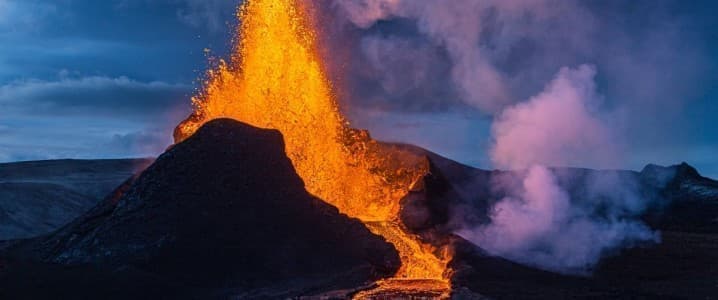Our Terms & Conditions | Our Privacy Policy
Scientists To Drill Volcano In Search Of Unlimited Super-Hot Energy
An international team of scientists is preparing to drill into an active volcano in Iceland in search of a better understanding of the properties of the molten rock, magma, deep underneath.
Apart from gaining better insights into the processes taking place under the surface of the Earth, the researchers plan, via a testbed under the Krafla volcano, to look into the potential of super-hot geothermal energy.
The extremely hot temperatures in magma could be a source of limitless 24/7 clean energy, according to the Krafla Magma Testbed (KMT) initiative. This is an international effort to improve volcano monitoring, potentially predict eruptions, and test ideas about tapping into the magma geothermal energy.
As countries look to boost their low-carbon energy sources to reduce emissions and reach net zero, geothermal energy is set to see accelerated growth, according to estimates by research firm Rystad Energy. Currently, the global installed geothermal power generation capacity stands at 16.8 gigawatts electric (GWe). This capacity is expected to increase to 28 GWe by 2030 and 110 GWe by 2050, driven by greenfield projects, brownfield developments, and resource optimization at existing assets, Rystad said in a report this year.
In Iceland, where geothermal is a major source of power and heating, the researchers from the Krafla Magma Testbed (KMT) will be looking to revolutionize geothermal energy.
Related: Russia Appears to Use Dubai-Based Firm to Expand Shadow LNG Fleet
“It’s like our moonshot. It’s going to transform a lot of things,” Yan Lavallée, a professor of volcanology at the Ludwig-Maximilian University in Munich, who heads KMT’s science committee, told BBC News reporter Adrienne Murray.
KMT, which aims to start drilling a well in 2026, will establish the world’s first magma observatory, which will study the magma and potentially develop concepts about the next-generation super-hot geothermal technologies.
Magma holds five to ten times more energy than conventional geothermal energy, even in Iceland, where the subsurface hosts hot fluids, according to the Ludwig-Maximilian University.
“Learning to access this resource safely will drastically improve the energy landscape in volcanically active countries and worldwide,” said the university, which earlier this year hosted the first official conference of the Krafla Magma Testbed.
Currently, geothermal systems use hot fluids underground. KMT wants to harness the power of the super-hot magma, which makes these fluids hot.
“Magma are extremely energetic. They are the heat source that power the hydrothermal systems that leads to geothermal energy. Why not go to the source?” Lavellee told the BBC.
Just last month, the project secured financing for the next two years after signing an agreement with the Icelandic Ministry of the Environment, Energy, and Climate, Iceland’s national power company Landsvirkjun, and Reykjavik Energy. The agreement marked a new phase for KMT as Reykjavik Energy joined the project.
“Building on the Iceland Deep Drilling Project (IDDP-1), where magma was encountered at a depth of 2.1 km, KMT is dedicated to harnessing the potential of near-magma energy,” the initiative said.
But drilling more than a mile deep into the volcano will not be an easy task, not only in terms of financing. The super-hot temperatures of 500 degrees Celsius, or over 900 F, and the gases deep underground could melt and corrode conventional drilling equipment.
At the University of Iceland, Sigrun Nanna Karlsdottir, a professor of industrial and mechanical engineering, and her team are currently testing materials that would be able to withstand the super-hot magma temperatures.
The team is focusing its efforts on high-grade nickel and titanium alloys, Karlsdottir told the BBC.
Drilling into a volcano will not be an easy task, and it will take years to potentially perfect a way of tapping volcano geothermal power. But if KMT succeeds with major breakthroughs, geothermal energy could enter a new era of providing unlimited round-the-clock renewable energy.
By Tsvetana Paraskova for Oilprice.com
More Top Reads From Oilprice.com
Images are for reference only.Images and contents gathered automatic from google or 3rd party sources.All rights on the images and contents are with their legal original owners.



Comments are closed.